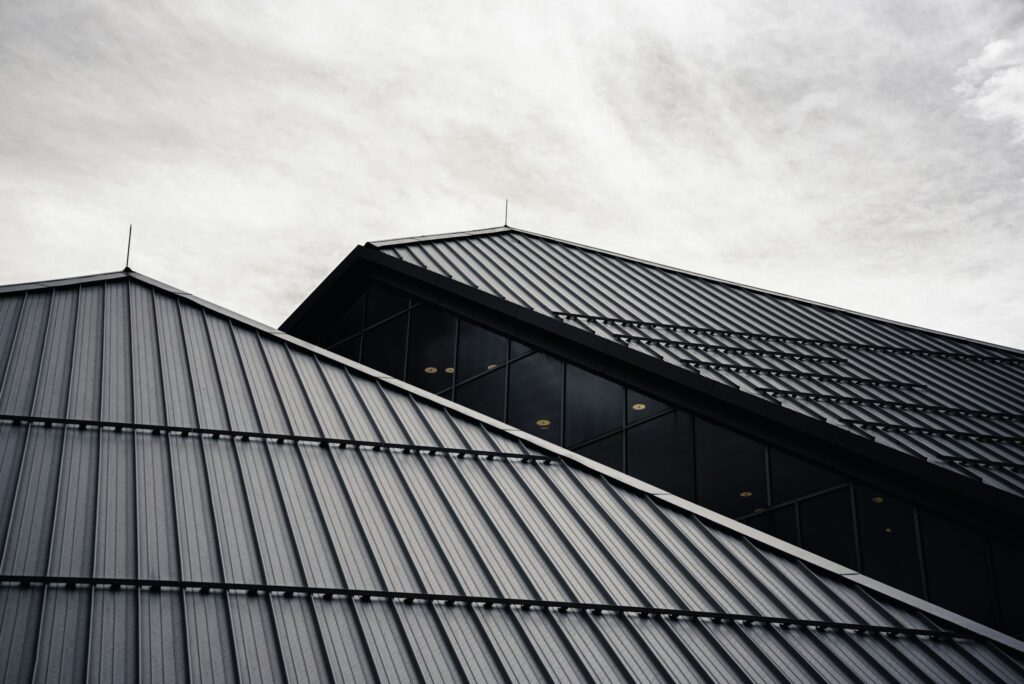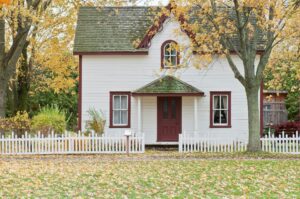Compare the costs, the durability, and style to find the perfect roof for your climate, budget, and lifestyle
Thinking about a new roof can feel like walking into a maze, especially if you haven’t tackled a roof replacement before. Two popular contenders often stand out from the crowd: metal roofing and asphalt shingles. Each has devoted fans touting its affordability, durability, or stylish looks. But which choice truly aligns with your home’s needs, your budget, and your long-term expectations?
This guide compares metal roofing versus asphalt shingles by cost, longevity, appearance, and environmental impact. We’ll also discuss how local climate factors in and share maintenance tips to help maximize your investment. By the end, you’ll be equipped to decide which roofing material best fits your lifestyle and goals.
Why the Choice Matters
A new roof is a major purchase—it safeguards your home’s structure, your belongings, and your comfort. Choosing a material poorly suited to your climate or budget can lead to repeated repairs or early replacement. On the other hand, picking the right roof can boost resale value, cut energy bills, and give you peace of mind for decades.
Metal roofing and asphalt shingles both dominate the U.S. residential roofing market, but their strengths and drawbacks differ significantly. In hot climates, for instance, certain reflective metal panels help keep attic spaces cooler, while asphalt shingles can be more prone to heat-related damage if not designed for high temperatures. In snowy areas, asphalt sometimes handles ice dams better, whereas metal roofs excel at shedding snow quickly. Let’s delve into the details.
Metal Roofing: A Closer Look
Different Types of Metal Roofs
When you hear “metal roofing,” you might picture bright aluminum panels on industrial buildings. Residential metal roofs, however, come in a range of styles and finishes:
- Standing Seam: Vertical panels with raised seams that lock together. Often used on modern or rustic-chic homes.
- Metal Shingles or Tiles: Designed to look like slate, clay tile, or even wood shakes. This style can suit more traditional homes.
- Corrugated Sheets: Usually feature wavy or rounded ridges. Common on barns and outbuildings, but also seen in minimalist architectural designs.
Steel (galvanized or galvalume), aluminum, copper, and zinc each bring unique advantages in cost, weight, and corrosion resistance.
Pros of Metal Roofing
- Longevity
A professionally installed metal roof can last anywhere from 40 to 70 years, depending on the metal type and the local climate. Copper roofs may go beyond 75 years. - Durability
Metal resists hail, wind, and heavy snow. It’s also immune to rot and insect infestation. - Energy Efficiency
Reflective metal panels keep your attic cooler, potentially lowering air-conditioning costs in hot summers. - Lightweight
Metal typically weighs less than asphalt shingles (especially thicker architectural types), easing stress on your home’s framing. - Eco-Friendliness
Many metal roofs contain recycled content, and the panels themselves are recyclable once removed.
Cons of Metal Roofing
- Higher Initial Cost
Metal roofing generally costs more upfront than asphalt. While the long lifespan can offset this, the initial investment may strain some budgets. - Noise Concerns
In heavy rain or hail, a metal roof can be noisier. Proper insulation and underlayment help dampen the sound. - Denting and Scratches
Thinner or cheaper metal might dent under large hailstones or if someone walks incorrectly on the panels. - Installation Complexity
Metal requires skilled installers who understand specialized fasteners and seam details. Poor installation can lead to leaks or cut short the roof’s lifespan.
Resource: For in-depth coverage of metal roofing styles and finishes, visit the Metal Roofing Alliance, which offers comparison charts and a photo gallery to explore different aesthetics.
Asphalt Shingles: A Closer Look
Types of Asphalt Shingles
“Asphalt shingles” is a broad category that includes:
- 3-Tab Shingles
The most basic option, typically cheaper but with simpler design and less wind resistance. - Architectural (Dimensional) Shingles
Thicker, layered shingles that create a more textured look. Often carry higher wind ratings and longer warranties. - Luxury or Designer Shingles
High-end lines designed to mimic slate or wood shakes, adding premium curb appeal without the full weight or cost of slate or cedar.
Pros of Asphalt Shingles
- Lower Cost
Asphalt shingles rank among the most affordable roofing materials, making them a go-to choice for budget-conscious homeowners. - Ease of Installation
Most roofers have extensive experience with asphalt shingles. Repairs and partial replacements are also more straightforward. - Variety of Styles
With many colors and textures, asphalt shingles can seamlessly fit almost any architectural style. - Dependable Performance
Modern asphalt shingles often carry wind ratings of 110 mph or more, and some handle moderate hail well. They’ve come a long way in durability over the decades.
Cons of Asphalt Shingles
- Moderate Lifespan
Even premium asphalt shingles usually last 20–30 years, trailing behind metal’s longevity. - Environmental Impact
Asphalt shingles are less recyclable than metal and often end up in landfills, although some recycling programs do exist. - Potential for Heat Absorption
Dark-colored shingles in hot areas can drive up attic temperatures. While “cool roof” asphalt shingles exist, they add to initial costs. - Vulnerability to Severe Weather
Extreme storms with large hail or high winds can damage shingles more easily than metal. Subpar installation can lead to blow-offs in strong gusts.
Resource: For an in-depth look at asphalt shingle performance and testing, see Consumer Reports’ Roofing Guide.
Cost Comparisons
Metal Roofing Costs
- Range: $10,000–$20,000 (or more) for an average 2,000–2,500 sq ft home.
- Variables: The specific metal (steel, aluminum, copper), roof complexity, and local labor rates. Copper or zinc can push costs even higher.
- ROI: The long lifespan and potential energy savings can balance out the big upfront expense, especially for homeowners who expect to stay put for decades.
Asphalt Shingle Costs
- Range: $5,000–$12,000 for a similar-sized home.
- Variables: Shingle grade (3-tab vs. architectural vs. luxury), brand, and roof slope or architectural complexity.
- ROI: Lower up-front price, though you’ll likely replace the roof sooner. If you’re not staying long, the cost difference may be appealing.
Pro Tip: Always get at least three quotes from reputable contractors who specialize in your chosen material. HomeGuide provides national averages, but local conditions differ widely.
Climate Considerations
In hot, sunny regions, metal roofing can reflect solar heat more effectively, cutting attic temperatures. Asphalt shingles can also be manufactured with reflective granules, but these often cost more. In snowy, cold climates, metal’s smooth surface quickly sheds snow, while asphalt shingles can form ice dams unless well-insulated and ventilated.
Hurricane or tornado-prone areas often lean toward metal because of its high wind resistance—provided it’s installed with the correct fasteners. Still, advanced asphalt shingles (rated for high winds) can also hold their own if properly installed. Meanwhile, extremely humid climates might favor metal’s resistance to mold, although algae-resistant asphalt shingles also exist.
For regional case studies on roofing and climate, Roofing Contractor Magazine regularly publishes industry data and best practices.
Installation and Maintenance
Metal Roofing Installation
Experience counts. Metal’s installation typically involves:
- Measuring and Cutting: Panels or shingles are precisely measured, sometimes on-site with specialized tools.
- Underlayment: A moisture-resistant underlayment is crucial, particularly in snowy or rainy climates.
- Fasteners and Seams: Proper screw patterns and seam interlocks are essential to prevent leaks.
- Ventilation: Adequate attic airflow reduces moisture and heat buildup beneath metal panels.
Maintenance largely involves checking for loose fasteners or damaged panels after storms. You might need to repaint or re-coat metal panels over time, though modern finishes often last 20 years or more before showing signs of wear.
Asphalt Shingle Installation
Because asphalt is so common, most contractors can install it swiftly—often within a day or two for an average-sized home. The process includes:
- Tear-Off (or Overlay): Old shingles are removed unless code allows layering the new ones on top.
- Deck Inspection: Rotted decking is replaced; a water-resistant underlayment is applied.
- Shingle Application: Shingles are aligned and nailed according to the manufacturer’s guidelines. Proper nailing patterns are key to wind resistance.
- Flashing: Areas around vents, chimneys, or skylights get extra attention to prevent leaks.
Asphalt shingles require closer monitoring in storm-prone areas, especially after hail or high winds. Partial shingle replacements are simpler than panel repairs, making asphalt appealing for homeowners who prefer easy fixes.
Sustainability and Environmental Impact
Metal roofing can be more eco-friendly, especially if made from recycled materials. Panels are also recyclable when replaced. Asphalt shingles, derived in part from petroleum, often end up in landfills, though some regions recycle or repurpose them for paving.
Still, the environmental equation can be complex. Transporting heavy metal panels over long distances has its own carbon footprint, and some metal finishes rely on chemical coatings. If sustainability is a priority, check the brand’s manufacturing processes. Green Building Advisor offers articles and discussions on eco-friendly construction, including roofing.
Appearance and Curb Appeal
Metal panels can evoke a contemporary aesthetic or a farmhouse charm, especially if you choose standing seam or corrugated styles. Metal shingles or tiles blend well with classic homes, replicating the look of slate or clay. Asphalt shingles offer a wide variety of colors and patterns, making them an easy fit for most suburban designs.
If you’re in a neighborhood with strict HOA rules or local building codes, you might need approval for certain metal roofing colors or styles. With asphalt shingles, your choice may feel more familiar to neighbors and potential buyers, though “cool” or specialty lines can add unique flair if you want a bold statement.
Potential Return on Investment
Many homebuyers appreciate the promise of minimal maintenance from a metal roof, though some worry about the “industrial” look or initial cost. Asphalt shingles, being more common, feel like a safer option for many. If you plan to stay in your home for a long time, metal’s durability could pay off by avoiding a second roof replacement down the road.
If you plan to move relatively soon, you may find asphalt shingles more practical. Their lower upfront cost can be attractive if you won’t be around to benefit from metal’s longer life. Plus, new asphalt shingles can still boost curb appeal and signal that a buyer won’t have to worry about roof repairs anytime soon.
FAQs and Common Myths
- Will a metal roof make my house hotter?
Not usually. Metal roofs often have reflective coatings, which can lower attic temperatures compared to dark asphalt shingles. Insulation also matters. - Aren’t asphalt shingles all the same?
No. Quality and durability vary, with architectural and luxury shingles offering better wind resistance and longer warranties than basic 3-tab shingles. - Isn’t hail a death sentence for metal roofs?
Severe hail can dent thinner metal, but many metal products are rated for impact resistance. Thicker gauges resist dents effectively. - Won’t metal roofs be too noisy in the rain?
With proper underlayment and attic insulation, noise levels can be similar to an asphalt roof—sometimes even quieter.
For a broader Q&A addressing roofing misconceptions, check Angi’s Roofing Articles, where homeowners discuss real-world concerns about both metal and asphalt.
Which Roof Is Right for You?
Ultimately, metal roofing or asphalt shingles each offer tangible benefits—and neither is universally “better.” Asphalt shingles generally win on affordability and ease of installation, making them a popular choice for first-time roof replacements or if you’re watching your budget closely. Metal, though more expensive at the outset, delivers standout durability, energy efficiency, and longevity, factors that can pay off if you’re planning to stay long-term.
Consider your local climate. Metal might handle windstorms and extreme heat more gracefully, while asphalt shingles hold their own well in colder or milder conditions, especially with proper insulation and attic ventilation. Reflect on how long you plan to remain in your home. If it’s forever—or you simply crave a roof that won’t need replacing for decades—metal’s appeal is hard to ignore.In the end, a well-chosen, carefully installed roof shields your home, potentially boosts its value, and saves you from frequent repairs. Gather multiple estimates, ask roofing contractors about their expertise with each material, and confirm warranties and energy benefits. That way, you’ll have a roof that suits both your style and the weather overhead—one that protects your home for years to come.




